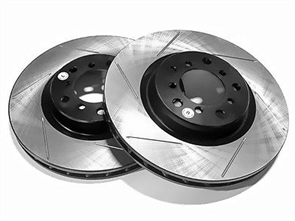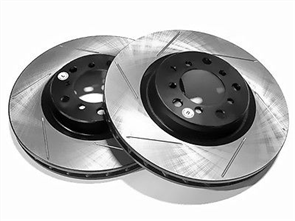When it comes to ensuring road safety and vehicle control, the braking system plays a crucial role. Among the various components of a modern braking system, the disc brake rotor stands out as a vital element. The disc brake rotor, also known as a brake disc, is an essential part of the disc brake assembly found in most automobiles today. In this article, we will delve into the mechanics of disc brake rotors, their construction, types, and their significance in providing efficient braking performance.
Understanding the Function:
Disc brake rotors are designed to work in tandem with brake pads, calipers, and hydraulic systems to convert the kinetic energy of a moving vehicle into heat energy, effectively slowing down or stopping the vehicle. When the brake pedal is pressed, the brake pads clamp down on the spinning disc brake rotor, creating friction and generating the necessary force to halt the rotation of the wheels.
Construction and Materials:
Disc brake rotors are typically made from cast iron, although other materials such as carbon composite or reinforced ceramics are used in high-performance applications. Cast iron rotors offer a good balance of cost, durability, and heat dissipation capabilities. They are manufactured by pouring molten iron into molds and then machining the resulting rough castings into the final rotor shape.
Types of Disc Brake Rotors:
Solid Rotors: Solid disc brake rotors are simple and commonly found in everyday passenger vehicles. They provide reliable braking performance for normal driving conditions and are cost-effective to produce.
Vented Rotors: Vented or ventilated rotors feature a series of cooling vanes between the two rotor surfaces. These vanes enhance heat dissipation by allowing air to flow through, reducing the risk of brake fade during prolonged or heavy braking. Vented rotors are commonly found in performance vehicles and those used for towing or hauling heavy loads.
Slotted Rotors: Slotted rotors have shallow grooves or slots machined into their surface. These slots help dissipate heat and remove water, brake dust, and other debris from the rotor surface. Slotted rotors improve initial brake response, particularly in wet conditions, and are popular among high-performance and off-road vehicles.
Drilled Rotors: Drilled rotors feature holes drilled through the rotor's surface. These holes aid in heat dissipation and reduce the buildup of gas and dust between the brake pad and rotor. However, drilled rotors are more prone to cracking under extreme stress compared to other types, making them more suitable for street performance vehicles rather than racing applications.
Significance in Braking Performance:
The design and quality of a disc brake rotor significantly influence braking performance. An efficient rotor should have excellent heat dissipation properties to prevent brake fade, warping, or glazing of the brake pads. The rotor's surface should also be smooth and free from defects to ensure even contact with the brake pads, minimizing noise, vibration, and harshness during braking.
Maintenance and Replacement:
Proper maintenance of disc brake rotors is crucial for their longevity and optimal performance. Regular inspections for wear, thickness, and signs of damage are essential. If a rotor is severely worn, warped, or damaged, it should be replaced promptly to ensure safe braking.
Disc brake rotors play a critical role in the overall braking system of vehicles, enabling safe and efficient deceleration or stopping power. Their construction, type, and maintenance all contribute to the braking performance and the driver's confidence on the road. By understanding the mechanics of disc brake rotors, drivers and automotive enthusiasts can make informed decisions regarding the selection, maintenance, and replacement of these essential components, ultimately enhancing safety and driving experience.
For More Info:-






Comments